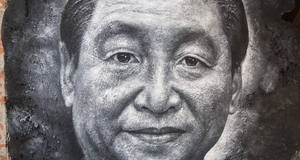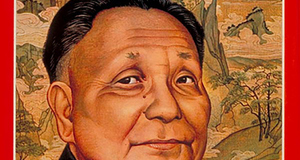Featured Article:Preserving Cantonese Television & Film in Guangdong: Language as Cultural Heritage in South China's Bidialectal LandscapeCantonese Growth as Pan-Regional Chinese IdentityThe Cantonese motion picture industry’s role as a conduit for a unique Southern Chinese cultural heritage stems in part from the historical ties between Guangdong’s and Hong Kong’s entertainment industries. These two regions have developed a sense of Chinese nationalism tied to the use of Cantonese, a linguistic identity that has transcended political affiliation throughout the decades. Yale Professor of Anthropology Helen Siu found in her studies that although the Hong Kong’s colonial history created an acceptance of British political practices, social life was still very centered around “Chinese traditions.”21 The concept of “Chinese traditions” is placed in quotation marks, because the aspects of Chinese heritage embraced by Hong Kong’s residents in the colonial and post-colonial era have mainly centered around their language heritage. Since Chinese dialect heritage is different from region to region, there is no single pan-regional “Chinese tradition.” The Cantonese experience is one that is not shared by the majority of the Chinese population, yet has become one of the main determinants of South Chinese culture due to the Cantonese film industry’s nationalistic history during World War II. Specifically, in the 1930s, Cantonese had already begun its journey into the national consciousness through the success of “talkies,” early picture films synchronized to sound.22 In fact, the success of Cantonese language films as a cultural product began creating tension within the Nationalistic Guomindang government at the time. The Guomindang increasingly viewed the north-south Mandarin-Cantonese language divide in China as violating the connection that Chinese citizens had as “one country” and “one people.”23 Early Cantonese language films created tension within the Nationalistic Guomindang government, which sought to maintain political stability by establishing a single Chinese identity. Thus, the concern that linguistic divide would undermine the central government’s authority has been present in Chinese governance for a long time, though the Guomindang’s actions during WWII actually allowed for the prolonged existence of Cantonese existence as the premier dialect other of Mandarin in South China.In an attempt to overcome what it felt was an internal barrier to Chinese cooperation in the anti-Japanese effort, the Guomindang Central Government decided in May 1936 to ban all sales of media materials in any dialect.24 In response, the top three Cantonese film producers and distributors decided to relocate the Cantonese motion picture industry to Hong Kong, under British rule since 1935 and immune to the Guomindang’s pressures for linguistic homogeneity, deciding henceforth to rename their operations the South China Film Association.25 The inclusion of the name “South China” in the Cantonese television and film industry’s new operating headquarters represented a clear identification of Hong Kong media culture as a subset of Chinese media culture. Rather than taking the opportunity to forge a new identity for Cantonese cinema separate from that of the cinema industry in mainland China, Cantonese film producers instead chose to emphasize the Chinese heritage of Cantonese speakers. In fact, in order to convince the Guomindang that banning the use of dialects other than Mandarin in the media was actually counterintuitive to uniting the Chinese war front, the Cantonese film industry began incorporating nationalistic elements into their filmography. From 1934-1941, 66 of 562 films produced in Hong Kong were geared towards themes of “national defence [sic]” and “National salvation first, dialects second.”26 In October 1937, the Guomindang’s Central Film Censorship Committee set up a branch in Guangdong, which screened Cantonese motion pictures and used them in propaganda to unite Cantonese speakers in the Chinese war effort.27 Understanding the power that films and television have in promoting and legitimizing ideas, Cantonese filmmakers focused on using their art to bring Cantonese speakers together in the Chinese battlefront. Not only was Cantonese no longer hindering the Anti-Japanese war effort, the use of regional dialects in motion media served to connect southern Chinese people with their northern counterparts through a united sense of nationalism. At the same time, Cantonese was legitimized through early WWII propaganda efforts as an important aspect of not only South Chinese culture, but also a greater Chinese heritage. The symbiotic relationship between the Cantonese film industry in Guangdong and Hong Kong only grew during the PRC’s rule, which not only preserved Cantonese linguistic culture, but also helped build the South’s broadcasting media sector to its modern heights. After the establishment of the PRC in 1949, filmmakers began making a move to reestablish Cantonese-language television and film across the channel in Guangdong Province. However, Hong Kong filmmakers’ first attempt to formally establish a provincial filming hub in Guangzhou in 1952 was suspended due to the PRC Central Film Bureau’s intervention, which insisted on establishing a central planning structure.28 The Central Film Bureau’s insistence on a state-sponsored planning commission to be put in place suggests again that the Mandarin-Cantonese divide at the national level has historically been rooted in the fear that regional dialects will erode the central government’s power. Even so, the PRC convened the Guangzhou Film Studios Preparatory Committee in 1956 and agreed in 1958 to accept the help of Hong Kong film magnates in establishing the Pearl River Film Studio, which has since grown into the central authority of Guangdong’s film scene.29 The supportive relationship between the Chinese central government’s media stronghold in Guangzhou and Hong Kong film magnates led to a relationship based on cooperation and competition that allowed Cantonese filmography to continue holding prominence in South China. In the 1963, Pearl River Film Studio collaborated with Suen Luen Film Company from Hong Kong to produce the hit film Those 72 Tenants centering on eviction and police power abuse problems in South China.30 When the Chinese economy began focusing on globalization in earnest in the 1990s, the Hong Kong film industry once again stepped in to help Guangzhou’s production companies roll out ventures to overseas markets, including Circus Kids (1994) and Midnight Express in the Orient (1996).31 Joint-effort films in the region reflected the changing societal issues experienced by Cantonese-heritage families and created a space that, for decades, publically reaffirmed Cantonese as a unique part of South Chinese cultural heritage. Modern Cantonese Television in the Family SpaceCantonese television’s importance as a socializing factor for Cantonese-speaking families has contributed to an overall sense of linguistic pride in the dialect. Guangzhou, the capital and largest city of Guangdong, houses an increasingly linguistically diverse Chinese population. In 2008, Guangzhou housed 7.73 million native Cantonese speakers and 5.89 million Mandarin-speaking workers who have migrated for economic opportunities, a ratio of nearly 1:1.32 In most circumstances, as a region becomes more linguistically diverse, the economically more dominant public language would tend to supplant the home language as lingua franca. However, around 85% of households in Guangzhou still speak Cantonese on a daily basis despite the fact that the vast majority of the population is able to speak Mandarin fluently due to standardized public schooling.33 Hence, Cantonese families still consider the dialect an integral part of their Chinese heritage and favor it in their private lives. The implications are immense when considering that Guangzhou city is also China’s second-largest and Guangdong’s first-largest television market, and has reached a cable TV penetration level of 99% of households.34 A 2007 study on Guangzhou residents’ television habits revealed that eight out of the city’s top fifteen channels have some, if not all Cantonese programming.35 Additionally, the average Guangzhou adult spends two hundred minutes a day watching television, and out of the 95 total available television networks in the province, 71 are Mandarin-only shows.36 Since the average Guangzhou adult watches more than three hours of television a day, and television is readily available, it is possible to conclude that television has become an important part of private life in Guangdong. While the vast majority of channels available in Guangdong are in Mandarin, the population in the province’s largest market for television networks still favors Cantonese television. To achieve this level of preference for Cantonese television in a city with such a mixed Mandarin-Cantonese speaking population, the majority of native Guangdong families most likely are watching Cantonese television most of the time. Overall, private entertainment is a very personal choice, and the prominent favoring of Cantonese television in the modern era suggests a continued pride in Cantonese as a cultural heritage in South China. Moreover, studies on language attitude in South China further the concept that Cantonese is widely accepted as the emotionally-dominant dialect in Guangdong, while Mandarin is valued for its economic utility. A 2003 study conducted by Chinese psychologist Zhang Jijia revealed that Mandarin-Cantonese bidialectal college students who had grown up in the post-1980s era of strong language standardization held a clear distinction between the value they placed on Mandarin and Cantonese. The 40 students surveyed overwhelmingly viewed speaking Mandarin as “important” (重要), with 92.5% of respondents answering in the affirmative.37 Furthermore, when asked if they “often practice their Mandarin speech skills” (经常练习讲普通话), 42.5% replied “often” (经常) and 45% replied “sometimes” (有时).38 These first two questions are very much geared towards determining Mandarin’s value as a language of strong economic utility. In Guangdong, the presence of Mandarin as the lingua franca in the public sphere and the growing proportion of native Mandarin speakers in the workforce means that native Cantonese speakers must increasingly use the standard language to communicate in the workplace. Hence, it would make sense for young Mandarin-Cantonese bidialectal college students view Mandarin as important and useful to practice. Contrastingly, when the survey turns towards the language of personal choice, the scope widens dramatically. When asked if they enjoyed speaking Mandarin, 42.5% responded unequivocally that they “disliked” (不喜欢) speaking Mandarin, while 27.5% said “only a little” (较喜欢).39 The same pattern was observable in the respondents’ answers for their preferred language of use in broadcasting media, an area of personal life in which they exert considerable power of choice. In Zhang’s study, one-fifth of participants definitely “disliked” (不喜欢) Mandarin television and radio programs, while another 37.5% only liked Mandarin shows “a little” (较喜欢).40 Ultimately, a deep emotional attachment is associated with bidialectal speakers’ viewers of Cantonese. When given a choice in television media, a large source of socialization in Guangdong private life, bidialectal Cantonese youth still prefer using and show a strong emotional attachment to their home language. These findings are corroborated by a 2015 study conducted by Dana Funywe Ng and Juanjuan Zhao, whose participants clearly delineated their understanding of Mandarin as the preferred public language while maintaining cultural pride in Cantonese. In the study, 75 Guangdong bidialectal college students ranked their answers to survey questions on a scale of one to five, with five denoting greatest agreement. Students strongly disagreed with the statement that “Cantonese should be replaced by Mandarin because it has little value,” with responses averaging out to 1.32.41 Equally compelling was the fact that respondents averaged 3.6 and 3.18 respectively when asked to rate “I feel strongly connected to Cantonese speakers” and “I like Cantonese because it is my mother tongue.”42 Most importantly, when asked to comment, a participant stated that he thought of Cantonese as “a very representative and symbolic language” and that “When [he met] people who speak Cantonese from other places or meet Guangdong people out of town, [he felt] a strong sense of belongingness.”43 Clearly, to today’s youth, Cantonese as a dialect still invokes a strong, positive emotional response, a reaction based in the region’s long history of Cantonese as being the language of family rather than the public one. In contrast, the students again held a clear view of Mandarin as the language with more utility outside of the home. Students tallied a high mean of 3.40 when asked whether Putonghua would further their careers, and described Mandarin as the language used under “more formal and serious” circumstances.44 Additionally, students gave Cantonese an average rank of 2.84 when asked if the dialect was highly regarded in society, compared to 3.60 when asked the same about Mandarin.45 The 0.76 difference in the students’ evaluation of dialect prestige in Chinese society as a whole indicate an understanding that, outside of Guangdong, Cantonese’ influence diminishes dramatically due to the lack of space, public and private, for its continued use. Post-Colonial China’s Trajectory Triggers Modern Cantonese Television ActivismWith the return of Hong Kong and Macau, the PRC has officially entered its complete post-colonial stage and begun pushing for a more united Chinese identity to market to the global economy, thereby leading to motions to suppress Cantonese television for the first time since the mid-1900s. In particular, the increasingly internationalized flows of financial assets, human capital, and media in Guangzhou and Guangdong Province as a whole have caused a disruption of the social fabric. This has increased the CCP’s macro-level view that local practices, like speaking Cantonese, are becoming less relevant than national agendas.46 The Chinese central government’s changing stance towards the Mandarin-Cantonese presence in Guangdong has become more apparent in the recent crackdowns on Cantonese television. In July 2010, Ji Keguang of the Municipal People’s Political Consultative Committee suggested to the Municipal Government of Guangzhou that all primetime news programs of Guangzhou Television should be changed to Mandarin.47 His reasoning was that since the 2010 Asian Games were to take place in Guangzhou later that year, presenting Mandarin television shows would create a stronger sociocultural environment for domestic and international visitors.48 The proposal focused mainly on facilitating tourism through the further imposition of Mandarin, which has long been the economically dominant dialect throughout China. That the new policy towards Guangzhou television, if implemented, would allow Mandarin to move beyond its widely accepted role as public lingua franca to encroach into the private entertainment space reserved by Cantonese families for their heritage language, was not lost on the public. In July and August 2010, more than 2,000 local citizens connected over the internet and gathered to protest in the streets under the slogan “protecting the local specifics of Guangzhou.”49 One youth surveyed about this incident reported, “Language is the carrier of culture. Thus cancellation [sic] of Cantonese stands for the wipe out of part of Chinese civilization.”50 The push against cancelling Cantonese primetime television mainly focused on the dialect’s cultural value, which highlights the profound impacts that Guangdong’s motion picture industry has had on the preservation of dialect pride in today’s South Chinese youth. Therefore, 2010 Cantonese television controversy embodies the core of South China’s diglossia tensions: the clash between macro-level political-economic decisions with micro-level social considerations. Under increasing pressures from protesters, the Guangzhou government hastily released a statement denying any plans to remove Cantonese programming in preparation for the 2010 Asian Games.51 Above all, the government’s response to the protests suggests that, despite the CCP’s desire to move China onto an increasingly globally dominant economic trajectory, the need for social stability still trumps any attempts at Chinese language homogenization through Putonghua standardization. Reconciling Two “Youth-Led” Aspects of Cantonese Television PreservationThe twofold position that bidialectal youth play in the debate of Cantonese cultural pride complicates the process of Cantonese television preservation. First, the concern over the diminishing Cantonese proficiency of today’s native Guangdong children has sparked the debate over the importance of the dialect conservation movement. In particular, South China’s new economic culture of migration has disturbed the normal process by which Cantonese is acquired within the family home. Studies have shown that for bilingual families, preservation of the parents’ native tongue is determined by whether the parents choose to adopt the less “public” language in the home.52 For Cantonese, which has lost most of its public function outside of broadcasting media, the family’s use of the dialect is paramount to its inheritance. Cantonese parents are increasingly worried that their children will be left behind in the competitive Chinese academic realm if they do not understand Mandarin when they start attending elementary school, which has led to increased incidences of parents primarily using Putonghua at home.53 In a 2006 study of the Grand-Estate School in Guangzhou, sociolinguistics researcher Sihua Liang noted that while most students’ parents were native speakers of their family dialects, 46% of students identified themselves as only native speakers of Mandarin who spoke little or none of their parents’ mother tongues.54 The debate over the importance of Cantonese language preservation is based on patterns of intergenerational language shift and potential Cantonese dialect death once South Chinese youth begin favoring Mandarin. The fear that cancelling Cantonese television will lead today’s Guangdong youth to lose the last frontier of Cantonese language internalization plays a prominent role in the debate over the PRC’s now changing language standardization tactics. Therefore, Cantonese-Mandarin diglossia is framed by concerns that younger generations will need to gain social mobility at the expense of losing their Cantonese cultural heritage. However, the politics of migration have not only begun changing the composition of native Cantonese speakers to Mandarin-speaking workers in the province, but have also had profound impacts on Cantonese speakers’ views on regional cultural purity. As one of China’s fastest-growing hubs for both manufacturing and services jobs, Guangdong Province is now the top destination for urban migrants and has seen a population increase of more than 37.5% from 1990-2000, the majority of which was a result of migration.55 Even for Mandarin-background urban migrants interested in allowing their children to learn Cantonese, the maintenance of the dialect purely in the private sphere often means that it is too much for these families to keep up. In 2009, Liang Sihua’s study of the Chen family, a Mandarin and Teochew dialect-speaking migrant family with parents who had attended university in Guangzhou, revealed that their son who learned Cantonese in pre-kindergarten eventually forgot all of his Cantonese after entering primary school.56 Mrs. Chen explained that pre-kindergarten classes in Guangzhou were often taught in Cantonese, though once children reached elementary school, teachers made a dramatic change and refused to speak Cantonese at all.57 It makes sense that for a family with little to no Cantonese background, the imposition of Putonghua standardization in the public sector would only provide a higher barrier to dialect acquisition. A further inquiry into the reason behind the Chens’ desire for their son to learn Cantonese revealed that the perception of ethnolinguistic “purity” and belonging as a Guangdong native is strongly linked to one’s willingness to speak Cantonese with strangers.58 Indeed, some urban migrant families may aspire to acquire Cantonese to receive benefits from being perceived as a member of the local “in group.” For families like the Chens, displaced far from their ancestral homes, blending into the local culture may be just as important as benefiting from the economic prosperity of the region. Even so, the barriers to dialect acquisition are too high and few are successful in the end. Guangdong is experiencing a situation where young Cantonese speakers are losing proficiency while children from other dialect backgrounds are not adding to the existing pool of Cantonese-speaking youth. In addition, netizens used derogatory slogans such as “Guangzhou people speak only Cantonese, if you don’t understand, please go back to the countryside” during the 2010 pro-Cantonese television demonstrations.59 The inflammatory language used by Cantonese-speaking youth in the anonymous world of the internet suggests a frustration with the demanding changes that Guangdong’s changing economy has on the private sphere. The youth generation’s proficiency with social media has allowed them to express local grievances towards Mandarin-speaking migrants, who provide the central government with reason to begin pushing for the consolidation of Mandarin in Guangdong’s private sphere. The youth generation’s proficiency with social media has allowed them to express local grievances towards Mandarin-speaking migrants, who provide the central government with reason to begin pushing for the consolidation of Mandarin in Guangdong’s private sphere. Even as tech-savvy Cantonese youth are the target population for language preservation, they are also helping lead the Cantonese-preservation effort. Hence, the struggle to connect Guangdong’s position as one of China’s leading socio-economic hubs with the locals’ moves to reclaim their regional linguistic identity underscores the macro-micro and local to non-local divides in language tension.Continued on Next Page » Suggested Reading from Inquiries Journal
Inquiries Journal provides undergraduate and graduate students around the world a platform for the wide dissemination of academic work over a range of core disciplines. Representing the work of students from hundreds of institutions around the globe, Inquiries Journal's large database of academic articles is completely free. Learn more | Blog | Submit Latest in Anthropology |


















